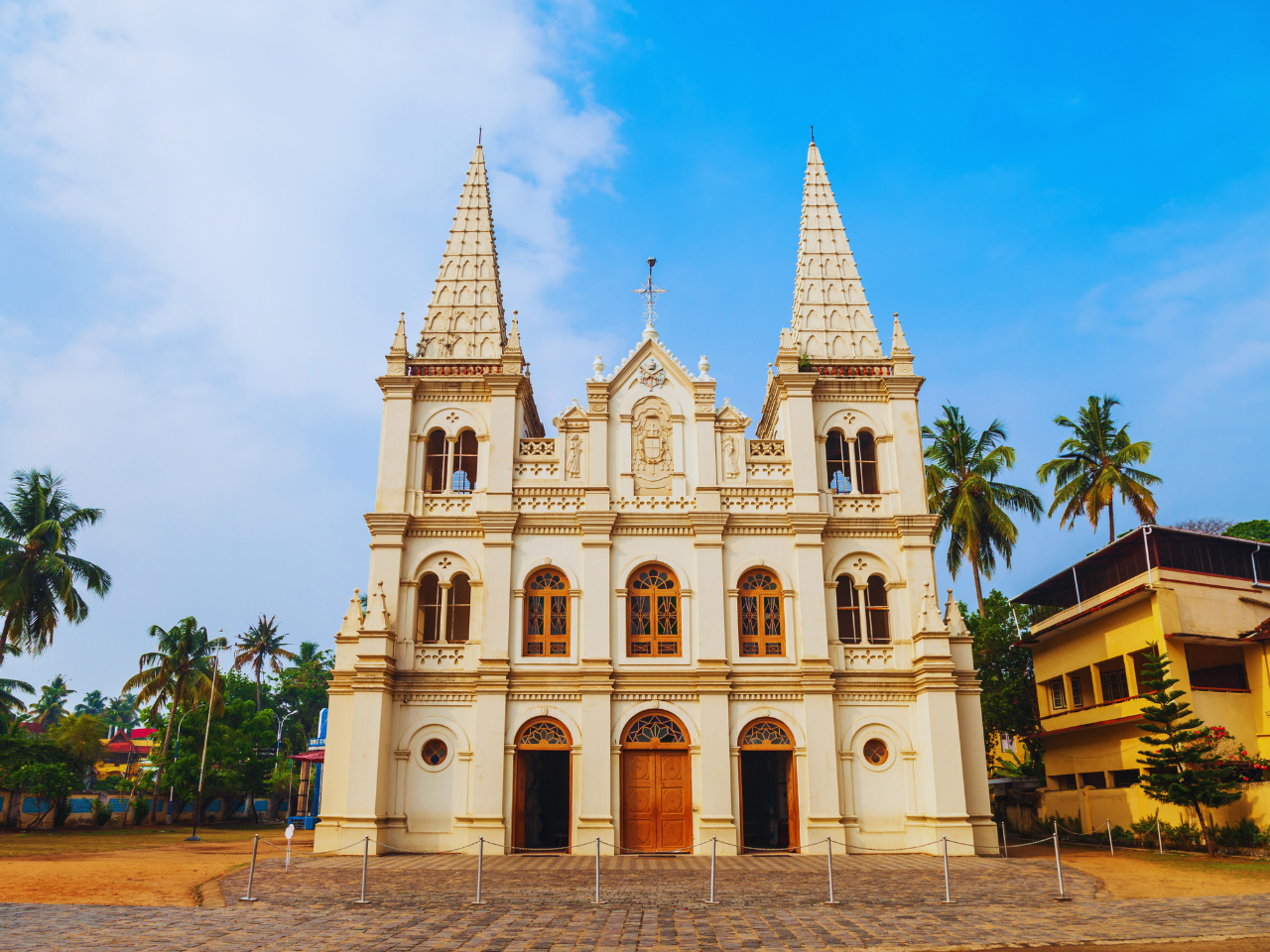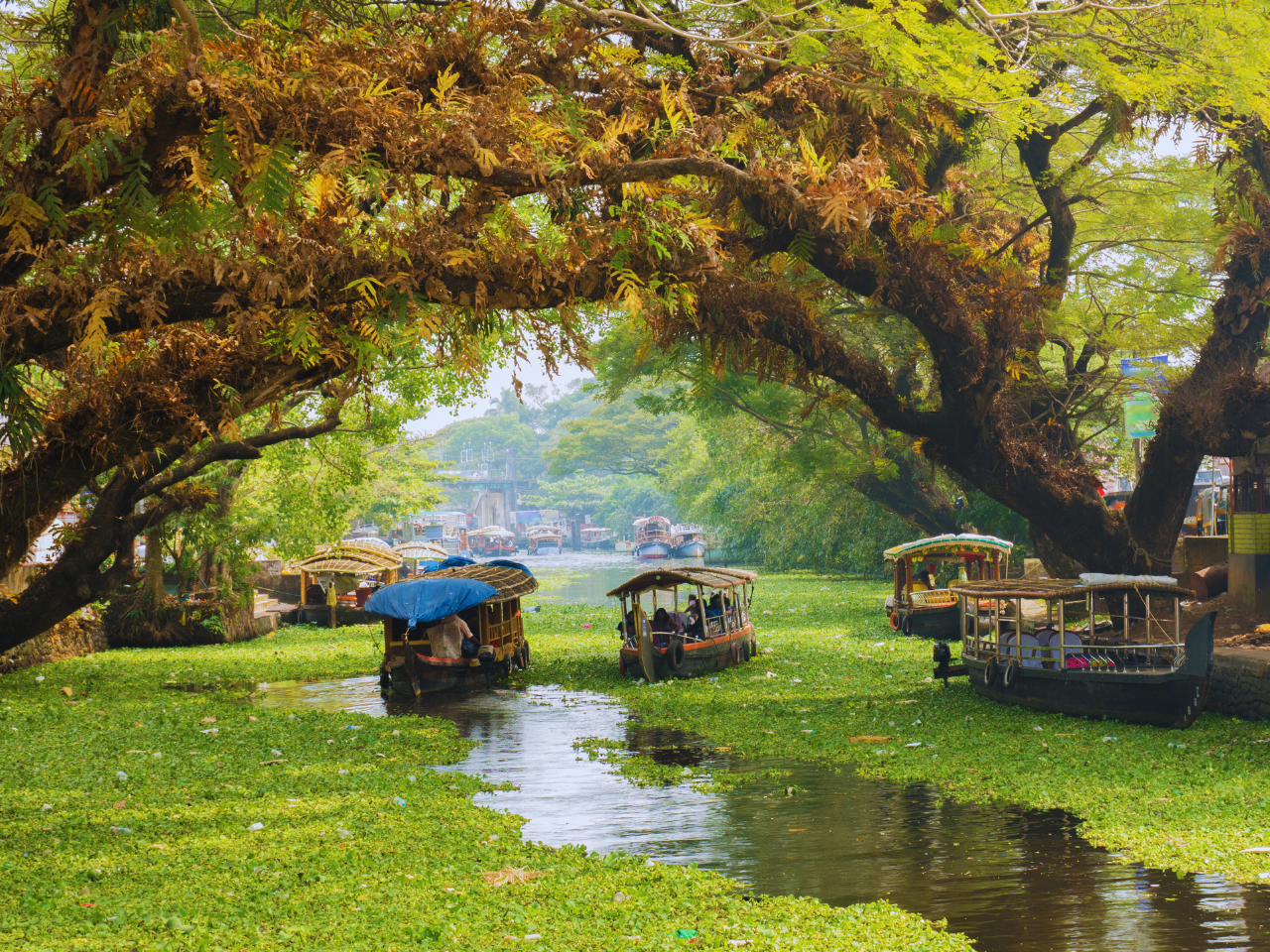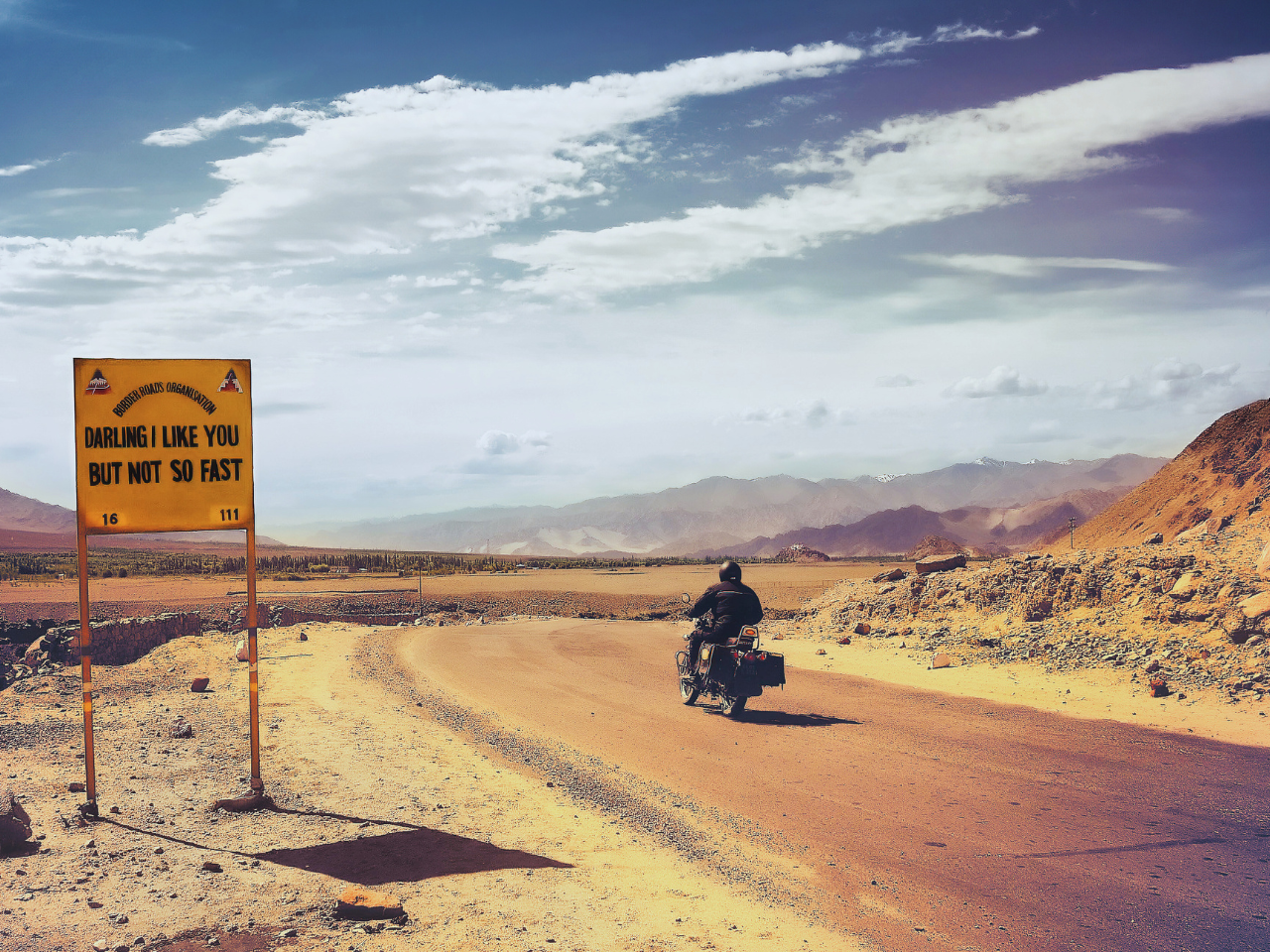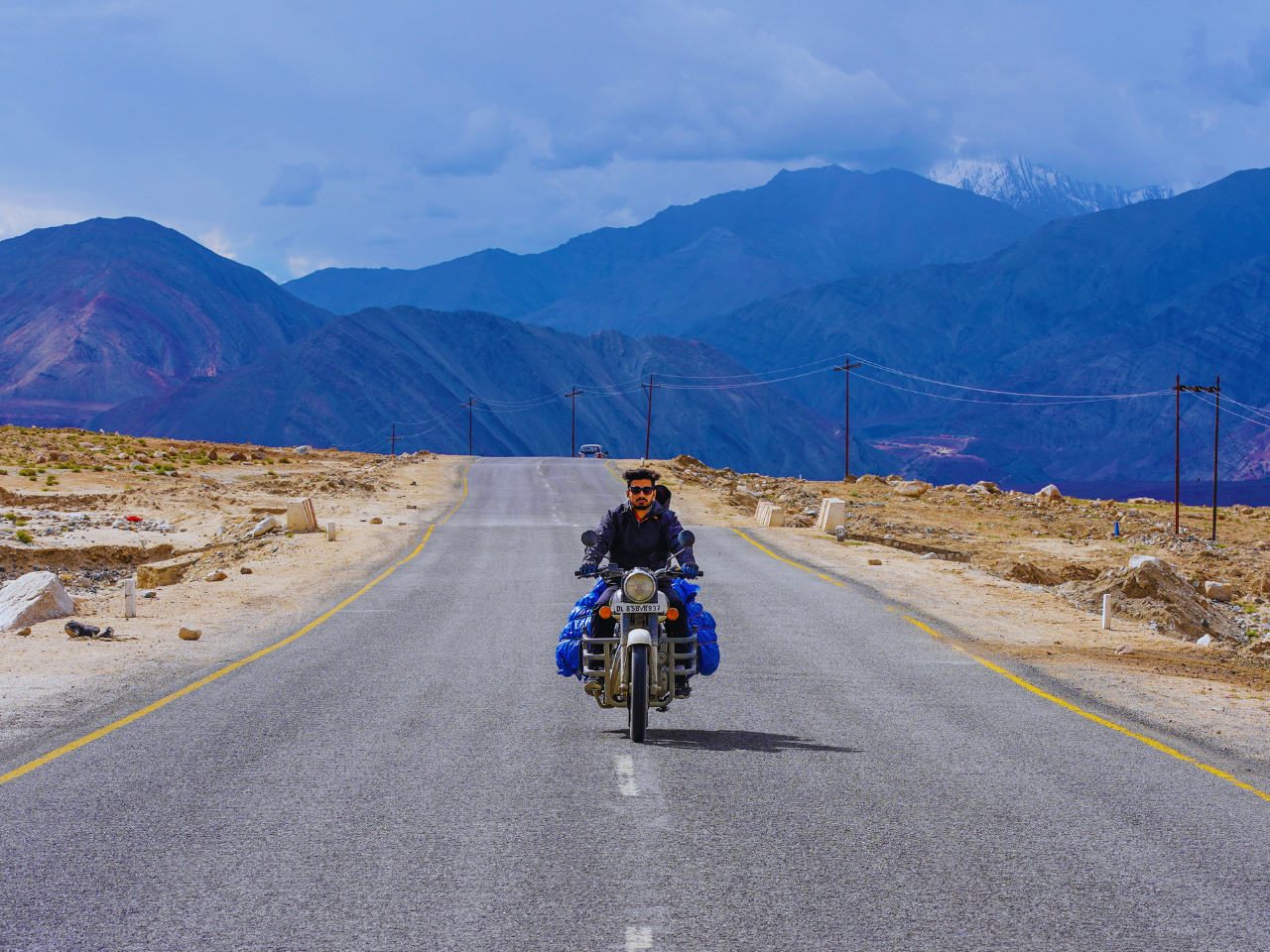How To Reach Cochin
How To Reach Cochin
Cochin, also known as Kochi, is a vibrant city on the southwest coast of India in Kerala. Whether you’re planning a cultural visit, a business trip, or simply exploring the beauty of this historic port city, getting to Cochin efficiently is key. Here’s a detailed guide on how to reach Cochin, covering all major transportation options, along with distances, travel times, and estimated costs.
By Air: The Quickest Way to Cochin
Cochin International Airport (COK) is the fastest way to reach the city, located about 25 kilometers northeast of the city center in Nedumbassery. It’s well-connected to major cities in India and internationally.
From Delhi: The flight covers approximately 2,630 km in about 3 hours, with airfares ranging from ₹3,000 to ₹10,000 depending on the season and airline.
From Mumbai: The flight distance is around 1,375 km, taking roughly 2 hours. Airfares typically range from ₹2,500 to ₹8,000.
From Bangalore: Covering about 370 km, flights take around 1 hour 15 minutes, with costs between ₹2,000 and ₹6,000.
From Chennai: The 685 km journey takes about 1 hour 30 minutes, with airfares ranging from ₹2,000 to ₹7,000.
After arriving at the airport, you can choose from various transport options to reach your destination within Cochin.
Prepaid Taxi: Costs range from ₹600 to ₹1,000, depending on the distance to the city center.
KSRTC Buses: Fares are economical, ranging from ₹40 to ₹100, connecting the airport to various city points.
Car Rentals: For those preferring self-driving, rental costs range from ₹1,500 to ₹3,000 per day.
By Train: A Scenic and Economical Journey
Cochin is well-served by several major railway stations, including Ernakulam Junction (ERS), Ernakulam Town (ERN), and Aluva Railway Station (AWY). These stations connect Cochin to major cities across India.
From Delhi: The train journey covers approximately 2,600 km, taking around 48-50 hours. Ticket prices vary from ₹800 to ₹4,500, depending on the class.
From Mumbai: The distance is about 1,366 km, with travel times ranging from 24 to 30 hours. Fares range between ₹600 and ₹3,500.
From Bangalore: The 510 km journey takes around 10-12 hours, with tickets priced between ₹300 and ₹2,000.
From Chennai: Covering 700 km, the train journey takes 12-14 hours, costing between ₹400 and ₹2,500.
Upon arrival at any of Cochin’s railway stations, you can choose:
Auto-Rickshaw: A quick, affordable option costing between ₹50 and ₹150.
Taxi: Prices range from ₹200 to ₹600, depending on your destination within the city.
Buses: KSRTC buses provide a budget-friendly option, with fares between ₹10 and ₹50.
By Road: A Scenic Drive to Cochin is accessible by a network of national highways, offering scenic routes for those who enjoy road trips. The primary highways are NH 66 and NH 544.
From Bangalore: The journey via NH 44 and NH 544 covers about 550 km, taking 10-11 hours. The fuel cost for this trip ranges from ₹4,000 to ₹6,000, depending on the vehicle. If you prefer taking a bus, expect to pay between ₹800 and ₹2,500 for an AC Sleeper or Semi-Sleeper.
From Chennai: Driving via NH 32 and NH 66 covers around 685 km in 12-13 hours, with fuel costs between ₹5,000 and ₹7,000. Bus fares range from ₹1,200 to ₹3,000.
From Mumbai: The journey via NH 66 spans approximately 1,375 km, taking 24-28 hours, with fuel costs ranging from ₹8,000 to ₹12,000. Bus fares range from ₹1,800 to ₹4,000.
From Mangalore: Covering around 420 km, this route takes 8-9 hours, with fuel costs between ₹3,000 and ₹4,500. Buses on this route charge between ₹700 and ₹2,000.
Once you arrive in Cochin by road, you have several options for getting around the city:
Local Taxis and Cabs: Costing between ₹300 and ₹1,500 depending on the distance.
Auto-Rickshaws: Typically charge between ₹50 and ₹200.
Buses: KSRTC and private buses operate extensively, with fares ranging from ₹10 to ₹50.
By Sea: An Adventurous Route to Cochin
Cochin is an important port city, and while it primarily serves commercial purposes, it’s also a popular stop for cruise liners.
Cruise Ships: Many international and domestic cruises include Cochin as a stopover, allowing passengers to explore the city before continuing their journey.
Local Ferries: While there are no regular passenger ferries to Cochin from other parts of India, local ferry services operate within the city, particularly across the backwaters and islands like Willingdon Island. These services are very affordable, costing between ₹5 and ₹20 per ride.
Getting Around Cochin after reaching Cochin, navigating the city is convenient with multiple transport options:
Local Buses: With fares ranging from ₹10 to ₹50, buses connect various parts of the city.
Auto-Rickshaws: A common and economical option, costing between ₹50 and ₹200.
Taxis and Ride-Sharing: Available through services like Uber and Ola, with costs ranging from ₹300 to ₹1,500 depending on distance.
Ferry Services: Offering a unique way to explore Cochin’s waterways, with fares between ₹5 and ₹20.
Travel Tips
Book Early: During peak seasons like December-January or festivals like Onam, flights, trains, and buses can get fully booked, so plan ahead.
Weather Considerations: Monsoon season (June-September) can affect road conditions, so take that into account when planning a road trip.
Local Language: While English is widely spoken, learning a few phrases in Malayalam can enhance your experience.
Cochin is a city that seamlessly blends modernity with tradition, offering something for every traveler. With this guide, you’ll be well-prepared to choose the best route to Cochin, considering all factors like distance, travel time, and cost. Whether by air, rail, road, or sea, reaching Cochin is just the start of an unforgettable journey.
Explore More About Kerala
To reach Kerala, you have several options depending on where you’re starting from. Here’s an overview:
1. By Air
- Kerala has four main international airports: Cochin International Airport (COK) in Kochi, Trivandrum International Airport (TRV) in Thiruvananthapuram, Calicut International Airport (CCJ) in Kozhikode, and Kannur International Airport (CNN).
- Direct flights are available from major cities in India and international destinations like the Middle East, Southeast Asia, and parts of Europe.
- From the airport, you can take a taxi or bus to your final destination within Kerala.
2. By Train
- Kerala has a well-connected railway network with major train stations in Trivandrum (Thiruvananthapuram), Ernakulam (Kochi), Kozhikode (Calicut), and Kannur.
- Book tickets through IRCTC or at local railway stations. Major trains from cities like Delhi, Mumbai, Bangalore, Chennai, and Hyderabad connect to Kerala.
3. By Road
- Kerala is well connected by road with neighboring states: Karnataka and Tamil Nadu.
- You can take a long-distance bus run by KSRTC (Kerala State Road Transport Corporation) or private operators, which are frequent from Bangalore, Chennai, and other South Indian cities.
- Alternatively, you can self-drive or hire a cab for a road trip into Kerala.
4. By Sea
- Kochi has a major port, and some luxury cruises and boats stop here on certain international and domestic routes.
- You can explore options for cruises from destinations like Mumbai.
5. Local Transport within Kerala
- Once in Kerala, travel between cities is convenient via trains, state-run buses, and private taxis.
- For shorter distances, you can also consider auto-rickshaws and ride-hailing services.
If you need specific guidance based on your starting location, let me know!
The best time to visit Kerala largely depends on what you want to experience, but generally, the ideal time is from October to March. Here’s a breakdown:
October to March: This is the peak tourist season. The weather is pleasant, with cooler temperatures and low humidity, making it perfect for sightseeing, backwater tours, and beach activities.
April to June: These months are hotter and more humid, which can make outdoor activities less enjoyable. However, this is a good time to find deals on accommodations and visit less crowded places.
July to September: This is the monsoon season, with heavy rainfall. While it’s not the most popular time to visit, the lush greenery and fewer tourists can be appealing. It’s also a great time for Ayurvedic treatments, as the weather is believed to enhance the effectiveness of these therapies.
If you’re interested in specific activities like wildlife watching, festivals, or cultural experiences, those can also influence the best time for your visit.
If you are coming through Train or Flight then you need to reach By reaching Ernakulam Railway station or Cochi airport.
You want to visit then July to Junauary will be the proper time to visit Kerala. If you want to avoid high cost then don’t come in holiday dates.
You can explore Munnar Thekkady Alleppey Vagamon Varkala Kovalam Trivandrums.
To visit 5 days 4 nights is the best plan in which you can explore Alleppey Vagamon Varkala Kovalam Trivandrum.
Houseboat Experiences by Carnival Tours, Alleppey.
In companies account on the 1st day only
Depends upon the Package you have taken.
Depends upon the Package you have taken.
Yes, Kerala is generally safe at night, especially in tourist areas, but remain cautious and avoid isolated places.
God’s Own Country: Kerala is often referred to as “God’s Own Country” due to its stunning landscapes, rich culture, and natural beauty, including backwaters, hills, and beaches.
High Literacy Rate: Kerala boasts one of the highest literacy rates in India, at over 96%. This is attributed to the state’s strong focus on education and social welfare.
Unique Festivals: The state is famous for its vibrant festivals, such as Onam and Vishu, which showcase traditional music, dance, and feasting. The snake boat races during Onam are particularly popular.
Ayurveda Hub: Kerala is renowned for its Ayurvedic treatments and wellness tourism. The state has numerous Ayurveda resorts and practitioners, making it a leading destination for holistic healing.
Backwaters: The backwaters of Kerala, particularly in places like Alleppey and Kumarakom, are a network of lagoons, lakes, and canals that offer houseboat experiences and are a major tourist attraction.
Diverse Wildlife: Kerala is home to several wildlife sanctuaries and national parks, including Periyar National Park and Wayanad Wildlife Sanctuary, where visitors can see elephants, tigers, and various bird species.
Cultural Melting Pot: The state has a rich cultural heritage influenced by various religions, including Hinduism, Islam, and Christianity, reflected in its architecture, cuisine, and art forms.
Spice Capital: Historically, Kerala was a major spice trading center, earning the nickname “Spice Garden of India.” It produces a variety of spices, including black pepper, cardamom, and cinnamon.
UNESCO World Heritage Sites: The Hill Stations of Kerala, including the Western Ghats, have been designated as UNESCO World Heritage Sites for their biodiversity and unique ecosystems.
Women Empowerment: Kerala is known for its progressive gender equality and women’s empowerment initiatives, which are reflected in higher participation of women in education and the workforce compared to many other Indian states.








